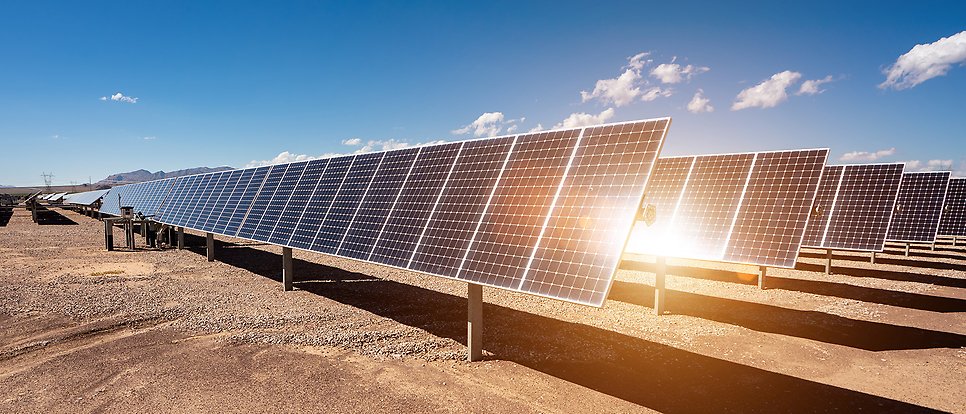Increased durability for perovskite solar cells

If the durability improves, perovskite thin films have enormous potential to fulfil industrial protocols and compete with silicon solar cells for further large-scale and industrial productions. Photo: Getty Images.
Using a specially designed molecule can improve the durability of perovskite solar cells, according to new research at Uppsala University. The result is the most stable perovskite film reported to date, increasing the potential to compete with the silicon solar cells that currently dominate the market.

Anders Hagfeldt, Bowen Yang och Jiajia Suo.
The research group behind the discovery is based at the Department of Chemistry – Ångström Laboratory and the lead author of the study is Anders Hagfeldt, Vice-Chancellor of Uppsala University.
The research group has discovered and employed a novel type of sulfonium-based molecule to enhance the durability of the next generation of photovoltaic technologies – perovskite solar cells.
“After treatment with our newly designed sulfonium-based molecule, the perovskite photoabsorber exhibits outstanding stability upon light soaking and remarkably remains in the photoactive phase after more than two years of ageing under ambient conditions. To the best of our knowledge, this represents the most stable perovskite film reported to date,” says Jiajia Suo, researcher at the Department of Chemistry – Ångström Laboratory.
Tested for more than 4,500 hours
The target solar cell device delivers a breakthrough record in its operational stability with close-to-unnoticeable performance loss after more than 4,500 hours. Extrapolating from this data yields an extraordinarily high theoretical T80 value (the time it takes for the solar cell device to decline to 80% of its initial performance) of over nine years under continuous 1-sun illumination, corresponding to a photon flux of an outdoor PV installation in Sweden of over 78 years.
Why is this an important discovery?
“Our work in discovering new materials and in-depth understanding of their properties opens up more possibilities in material science and engineering, which is important and inspiring in the field. Moreover, such excellent durability of perovskite solar cells provides a strong indication that perovskite thin films have enormous potential to fulfil industrial protocols and compete with silicon solar cells for further large-scale and industrial productions,” says Suo.
Rapid development of solar cells
The global development of photovoltaics is rapidly accelerating. Currently, silicon solar cells dominate the market with a world-record efficiency of 26.8%. There are alternative technologies which differ from silicon cells in functionality, materials and process technology. One of the most promising is perovskite solar cells.
“This is mainly due to their outstanding performance, with a present world-record efficiency of 26.1%. There is also a possibility of tandem applications, with two or more solar cells on top of each other, for example perovskite on top of silicon with a world-record efficiency of 33.9% and scalable cost-effective manufacturing,” says Bowen Yang, researcher at the Department of Chemistry – Ångström Laboratory.
Durability a major challenge
She explains that the long-term stability of perovskite solar cells remains the most significant concern in the field. Exposure to environmental factors such as moisture, heat and light can lead to the degradation of perovskite materials, compromising the overall performance and durability of the solar cells.
“For this reason, researchers are engaged in developing novel materials, protective coatings, encapsulation techniques and device engineering to enhance the stability of perovskite solar cells and pave the way for their widespread commercial viability. Tackling stability issues is crucial for integrating them into mainstream energy solutions and realising their potential as a cost-effective and efficient renewable energy source.”
Annica Hulth
Publication
Multifunctional sulfonium-based treatment for perovskite solar cells with less than 1% efficiency loss over 4,500-h operational stability tests, Nature Energy
DOI: 10.1038/s41560-023-01421-6
